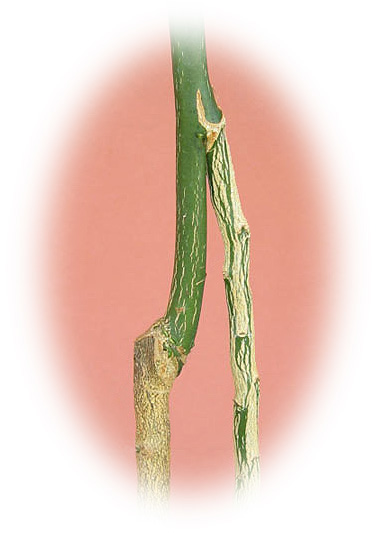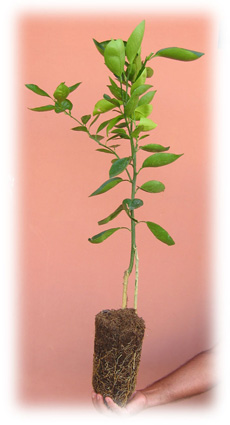

A great new development is now available for
the citrus industry in Brazil - citrus trees with two rootstocks.
The technique, also called inarching, has actually been known
for a long time and has been used to insure survival of important citrus
trees to serious rootstock diseases like Foot Rot, Nematodes, and Tristeza.
It recently reached commercial scale by successfully avoiding
orchard destruction by Citrus Sudden Death in the northern areas of the
Brazilian citrus belt.
The most common rootstock in Brazil is Rangpur
lime. This rootstock, however, is susceptible to all the diseases
mentioned above. The most important characteristics of Rangpur lime as a
rootstock are its resistance to drought, precocity in production, and high
productivity. As a result, it is the best citrus rootstock in the first 10
years of the orchard, under varied soil and climate conditions in Brazil.
Disease susceptibility, however, makes its performance less than ideal
afterwards. The most important later year problem with Rangpur lime is
Citrus Blight, but the other diseases also play a role, specially Citrus
Sudden Death. The effectiveness of double rootstocks against Citrus Blight
is yet to be confirmed. Known positive results against the other diseases
and the development of cheap grafting techniques by CITROLIMA during the normal
production of citrus nursery trees warrant the sharp increase in usage of
the technique by growers.
Swingle citrumelo, trifoliate,
cleópatra, and sunki are the most common second rootstocks utilized in
inarching. The second rootstock is planted near the citrus nursery tree in
its container two months before plant delivery. The second rootstock has its
tip removed with a slanted cut and is then inserted under the bark of
the scion stem, through an inverted T cut.
The combination of Rangpur lime with a disease resistant second rootstock is expected to be highly advantageous to the citrus tree. The best of the worlds would be a citrus tree which is resistant to drought, precocious, highly productive and with great longevity due to rootstock or trunk disease resistance.